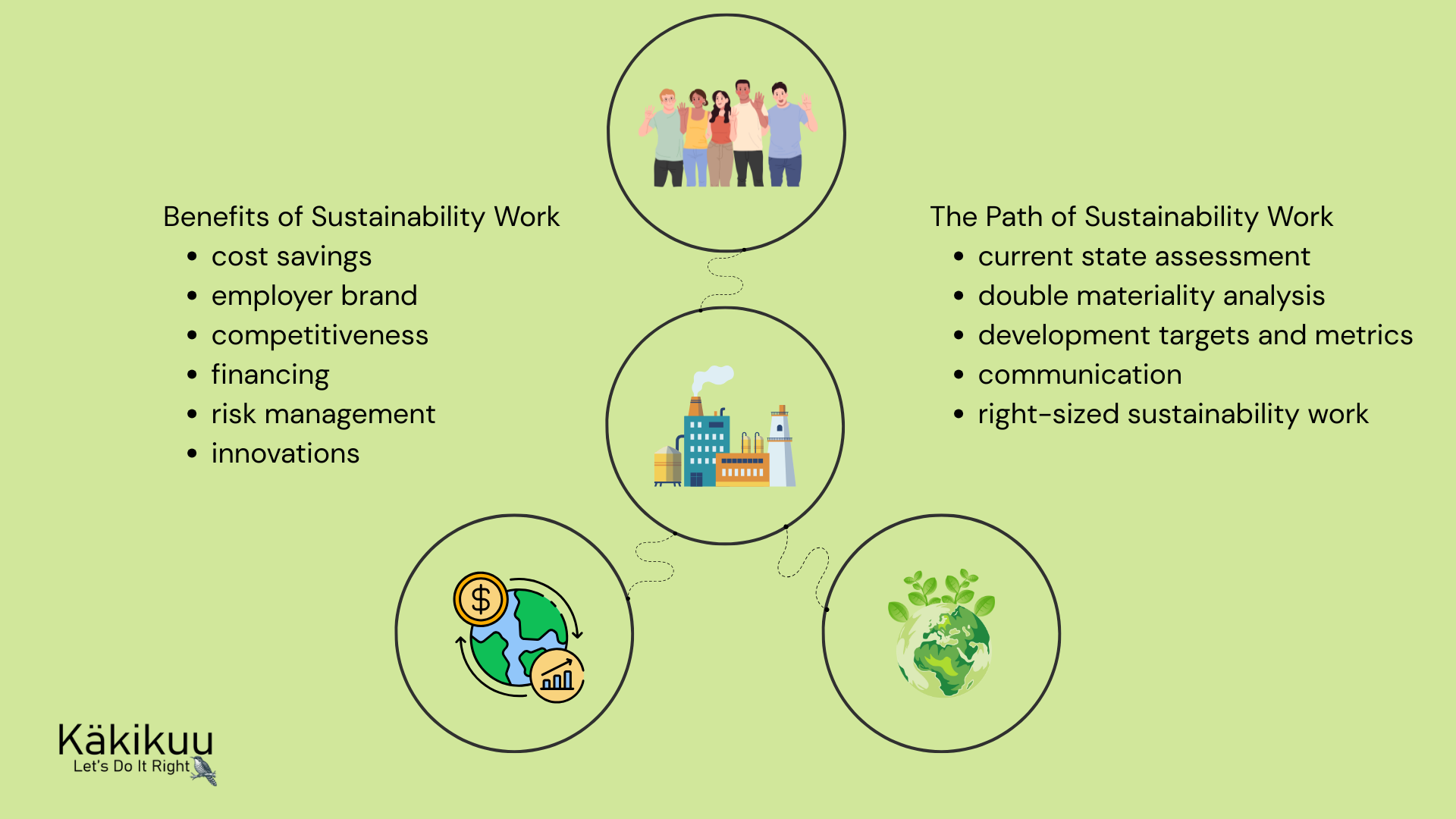Greenwashing is widely discussed, as responsibility and everything related to it is more relevant than ever—and really trending. What should each of us know about greenwashing, so we can understand what it is and what impact it has?
A quick Google search yields many explanations and increasingly clever definitions of greenwashing. Terms like reputation cleaning, image creation, and image marketing are frequently mentioned. It’s also associated with lies and half-truths. Indeed, greenwashing embodies all of these aspects. There’s even a book about the phenomenon, The Greenwashing Guide, published by Otava. This book, written by Antti Isokangas, Jani Niipola, and Riku Vassinen, offers bold opinions and stands on the issue, and I highly recommend it to anyone interested in learning more about the topic.
In this article, however, I will focus on a brief overview of greenwashing. At its worst, greenwashing is pure deception and fraud. The phenomenon is by no means new. Throughout history, marketing communication—what we used to call advertising—has involved exaggeration, half-truths, empty promises, and lies to grab consumers’ attention and steer their purchasing decisions toward a product. Greenwashing is like Black Friday: it causes consumers to make incorrect purchasing decisions based on false premises. At the same time, it undermines consumers' trust in sustainability efforts and communications.
Greenwashing is like Black Friday: it causes consumers to make incorrect purchasing decisions based on false premises.
Greenwashing is an attempt to make a brand, product, or service appear more responsible than it actually is. This is typically focused on environmental issues, as they increasingly appeal to us consumers. When Finnair recently advertised using fuel that reduces carbon emissions by 80%, but failed to mention that this new fuel is only used on 0.2% of the company’s flights, it was a blatant example of greenwashing.
When a Finnish berry company talks on its website about responsible entrepreneurship and pure natural raw materials, yet exploits and oppresses Thai berry pickers, it’s clear that this is no longer a trivial matter. Forced labor, meeting the characteristics of human trafficking, and substandard living conditions are things that no one can accept—anywhere.
Sustainability work is an important part of the daily operations of both small and large companies. For large companies, sustainability efforts are characterized by planning, goal-setting, and resourcing. In smaller businesses, sustainability is more often seen in the form of everyday practical actions, guided by the entrepreneurs' values. But what if you end up engaging in greenwashing yourself? Would you still dare to speak or communicate about your company's sustainability and responsible actions?
Yes, you can—and you should. At least as long as you don’t paint vague hopes and intentions as sustainability messages, but ensure that every message is backed by a concrete action. Communication must be grounded in reality, and it must be open and clear. You can already get far with honesty alone by asking yourself: Is the situation really as your message makes it seem? Also, your sustainability actions and messaging must not compromise any other aspect of responsibility—just like in the berry company example.
Setting clear goals helps even smaller companies establish a roadmap for their sustainability work. Your operations don’t have to be perfect or complete—it’s not only okay but important to communicate your progress. Even sharing that a certain goal hasn’t been reached is a form of responsible communication. And if you realize that you’ve unintentionally engaged in greenwashing, you can always raise your hand, admit the mistake, learn from it, and correct it through better, more transparent sustainability communication.

Greenwashing. Key points summarized on one slide.



